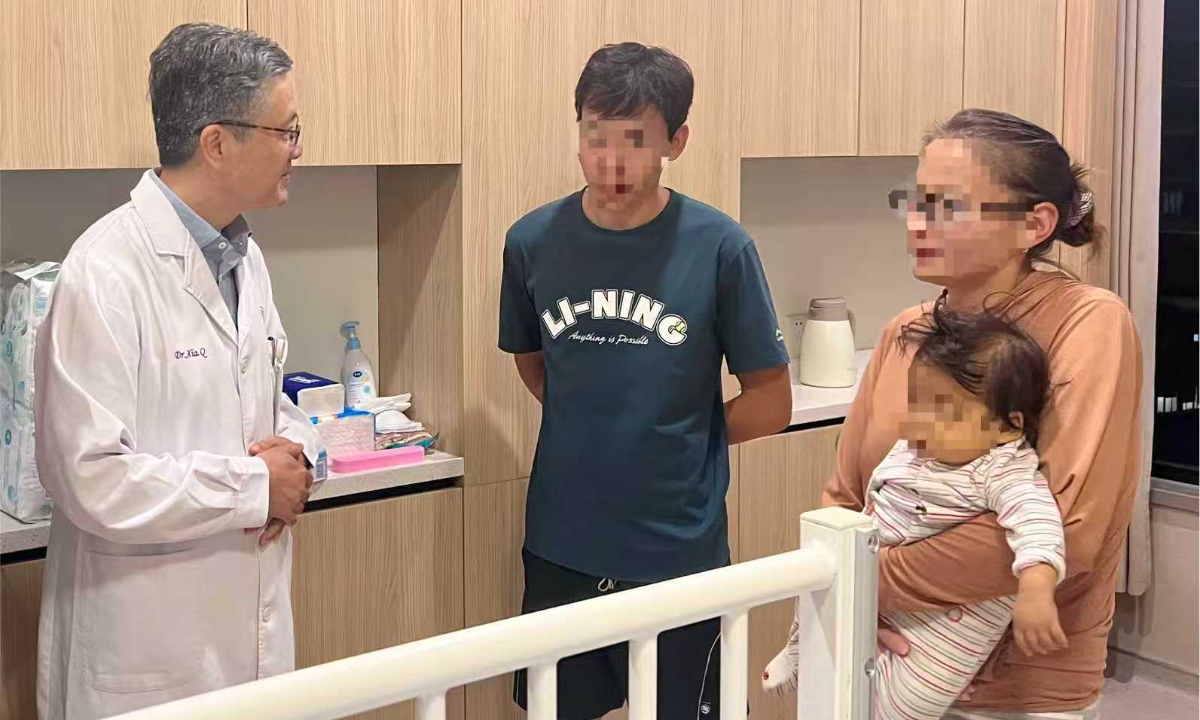Chinese doctors at a hospital in Shanghai recently performed a successful liver transplant on a six-month-old infant boy from Mongolia suffering from biliary atresia, with his father being a liver donor, The Paper reported on Tuesday.
The boy underwent the transplant last month at the Renji Hospital affiliated with Shanghai Jiao Tong University’s School of Medicine. He recovered smoothly from the critical post-transplant stages including the risks of infection and organ rejection. He and his father were discharged from the hospital together and went back to Mongolia last week, the Global Times learned from the Renji Hospital on Tuesday.
Born with congenital biliary atresia that progressed to cirrhosis, the boy faced life-threatening complications, with liver transplantation as his only chance of survival. However, Mongolia currently lacks the technology for performing living-donor liver transplants on very young infants.
The boy’s parents contacted Renji Hospital and, with assistance from the Chinese Embassy in Mongolia and other partners, brought him to Shanghai for treatment.
A medical team led by Xia Qiang, an academician at the Chinese Academy of Engineering and president of Renji Hospital, performed a liver transplant with the 250 grams of liver tissue donated by his father.
Before the surgery, the infant’s pre-transplant compatibility tests were completed efficiently through close collaboration between Chinese and Mongolian medical teams. Renji Hospital then convened multiple multidisciplinary consultations involving the liver surgery, intensive care, anesthesia, and nursing teams to create a comprehensive treatment plan tailored to the child, covering preoperative evaluation, surgical procedures, and postoperative recovery. The father voluntarily donated approximately 20 percent of his liver.
According to Xia, the greatest challenge of the surgery was the complex vascular anatomy of the donor liver, which demanded exceptional precision on the vascular reconstruction techniques during the transplant. To ensure everything went flawlessly, the team made several plans in advance.
Luo Yi, deputy director of the liver surgery department at Renji Hospital, harvested part of the father’s liver using minimally invasive techniques. Xia’s team then employed their proprietary vascular reconstruction methods to safely transplant the donated liver tissue into the child’s body. The six-hour procedure involved minimal bleeding and trauma.
Xia said that Renji Hospital will use this surgery as an opportunity to further improve cross-border referrals for complex cases between China and Mongolia, helping Mongolia enhance its multidisciplinary diagnosis and treatment capabilities, including for liver, cardiovascular, and neurological diseases.
Since 2014, when a four-year-old girl from Malaysia became Renji Hospital’s first overseas pediatric liver-transplant patient, about 70 children from countries including Malaysia, the Philippines, Mongolia, and France have received living-donor liver transplants at Renji Hospital, the Global Times learned from the hospital.
Statistics show that Renji Hospital’s pediatric liver-transplant team has performed over 4,000 surgeries. For twelve consecutive years, it has ranked first worldwide among single centers by case volume, with both surgical success rates and long-term postoperative survival rates reaching internationally leading levels.




